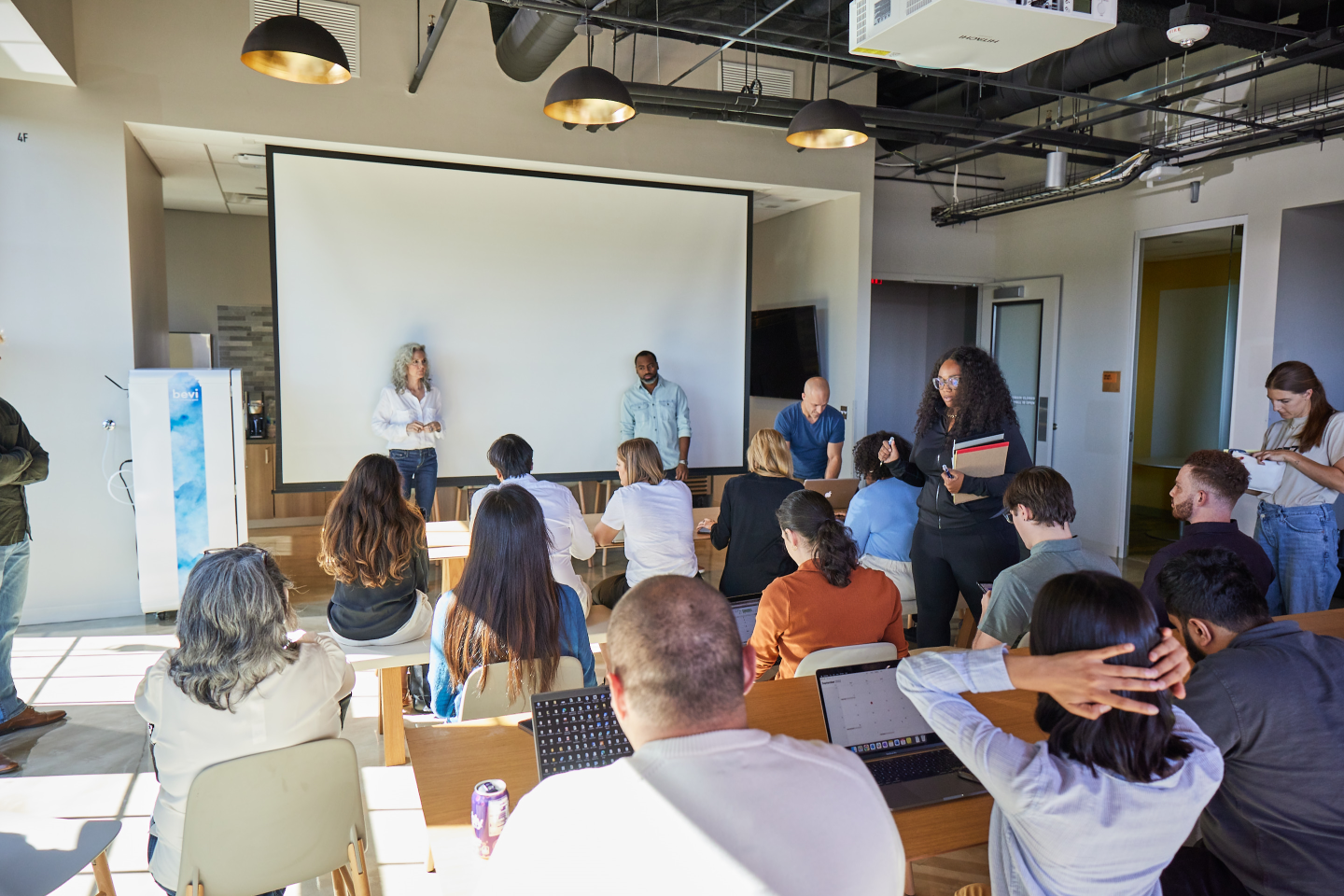Good morning!
While the majority of CEOs expect employees will return to the office full-time within three years, according to a recent KPMG survey, insurance giant Allstate is seemingly willing to break from the crowd.
The company has embraced a flexible work strategy, allowing managers and their teams to determine their own work arrangements. As such, Allstate has slashed more than half of its real estate, selling its Northbrook, Ill., headquarters in 2022. Some 99% of its 54,000 employees work either remotely or hybrid near one of its now hub-like office configurations.
“I know there are all these articles about people thinking five days a week is coming back, and everyone’s going to the office—I don’t,” Bob Toohey, Allstate’s chief human resources officer, tells Fortune. “We don’t know what the new way is ultimately going to be. I think as long as we stay flexible, test, learn, move with it, and have a good partnership between the employer and employee, we’ll have a great outcome.”
So far, the outcomes are in the company’s favor. Allstate saw a 23% increase in job applications after adopting a flexible work policy, including a 33% increase in diverse applicants. Internal mobility has also increased: Internal candidates filled 40% of open roles in 2022.
“From a talent strategy [perspective], it has been unusually successful because we get to find talent in areas we never would’ve. We’re not restricted by the walls we have to work in,” says Toohey.
To stay on top of this continual transition, the company created a new executive role—workplace futurist, held by Lauren DeYoung—to sit at the intersection of HR, communications, real estate, and technology functions and help guide the distributed workforce.
“There’s no crystal ball on exactly what the future of this is going to look like. But we’ve been listening to our employees and leaders, hearing that the flexibility we’ve gotten over the past couple of years has been a benefit and a good thing that we want to continue,” says DeYoung. Allstate’s physical spaces today are more akin to social hubs where employees can collaborate with their teams and socialize with colleagues from other departments. Instead of sitting in a cubicle, offices now have more open spaces designed similarly to a cafe setup.

DeYoung says the biggest challenge was realizing there’s no one-size-fits-all approach to flexible work. While some teams thrive with hybrid work agreements, others struggle to adapt.
“There isn’t a playbook we can send out and say, ‘We figured it out; this is what distributed work should look like at Allstate,’” she says.
One helpful approach is scaling successful policies or processes for the entire organization. For example, leaders across Allstate wanted icebreakers that weren’t overused or boring, so the company allowed access to an employee engagement Zoom plug-in called Funtivity that employees could play in virtual calls.
“We’re continuing to evolve and get better at quickly assessing what’s working or what’s not, and then scaling things that work and stopping things that aren’t,” says DeYoung.
Another aspect was equipping managers with the skills necessary to lead a distributed workforce. The program, Leading at Allstate, was piloted last summer and focuses on four capabilities—leading change, distributed teams, high-performing teams, and leadership effectiveness—and takes just under eight hours to finish. All 7,000 people managers have six months to complete it.
The training on leading a distributed workforce, for instance, teaches managers how to push inclusive practices when overseeing a global team. Some examples include being mindful of scheduling meetings if workers are in multiple time zones or accounting for different work styles. The company also partners with GlobeSmart, a platform that captures employees’ and leaders’ work preferences.
“When we look at our leadership development component, we know that people leaders have the most significant impact on team member engagement, which impacts their productivity, our customer experience, all of those things,” says Kim Tran, Allstate’s vice president and head of talent management. Tran says she hasn’t physically met most of her team, based all over the U.S. and other countries, including India and Northern Ireland.
Team leaders also receive a “connections” budget to bring their teams together. Managers have full autonomy over the funds and can use them to fly members to one city for social gatherings and team-building activities, do volunteer work, or even host online activities like building Legos.
To assess employee engagement, Allstate conducts pulse surveys. DeYoung says her team plans to roll out a survey specifically focused on connection and belonging. So far, metrics have been positive. Allstate’s employee engagement score increased from 80.5% in 2019 to 83.5% in 2023.
The company also tracks office attendance—not to micromanage employees, it says, but to gauge office space utilization and what specific employee engagement programs, such as an office watch party, entice workers to come in.
“I have been reading some of those headlines of bosses tracking who’s not coming and how long you stay,” says DeYoung. “I think there’s a lot that we can learn from that data, but not to enforce, ‘You need to be here for a certain amount of time.’ Really, it’s just to see if what we’re doing is working or not.”
Paige McGlauflin
paige.mcglauflin@fortune.com
@paidion
Reporter's Notebook
The most compelling data, quotes, and insights from the field.
The Screen Actors Guild’s national board approved the labor agreement with Hollywood studios on Friday, with an 86% vote in favor.
The three-year contract includes a 7% minimum pay hike for actors in the first year, bonus payments for successful shows on streaming services, and promises that AI can't reproduce actors' images without consent or compensation.
Around the Table
A round-up of the most important HR headlines.
- Honda will raise base wages by 11% in January for some of its U.S. factory workers and shorten the time it takes them to reach their top wage. Wall Street Journal
- The CEO of real estate brokerage CBRE Group predicts employees will work in-office 20% to 25% less than they did pre-pandemic. Bloomberg
- Apple will pay $25 million to settle a Department of Justice lawsuit alleging the company discriminated against U.S. citizens who applied for positions that went to immigrants looking to receive permanent resident status through the job. Fast Company
- Workers say probationary periods requiring new hires to work in-person for as much as six months in otherwise remote or hybrid roles are unnecessary and drawn out. WorkLife
Watercooler
Everything you need to know from Fortune.
Health benefits. New research suggests that flexible work and better work-life balance reduce the risk of heart-related conditions for employees over the age of 45. —Trey Williams
AI on call. Integrating AI notetakers into Zoom calls could give employees a bad impression of their managers, reduce the visibility of already underrepresented employees, and hinder employee connectivity. —Lila MacLellan
Workplace archetypes. Goal-oriented “detectives” and highly sociable “networkers” are the two workplace personalities that make up the majority of the U.S. and U.K. workforce, according to a Slack and YouGov quiz. —Ryan Hogg
This is the web version of CHRO Daily, a newsletter focusing on helping HR executives navigate the needs of the workplace. Sign up to get it delivered free to your inbox.













